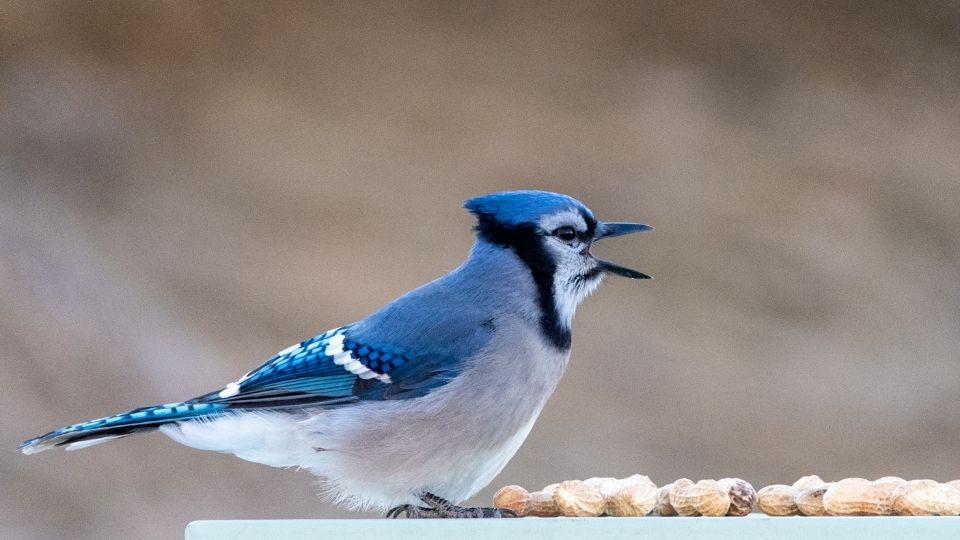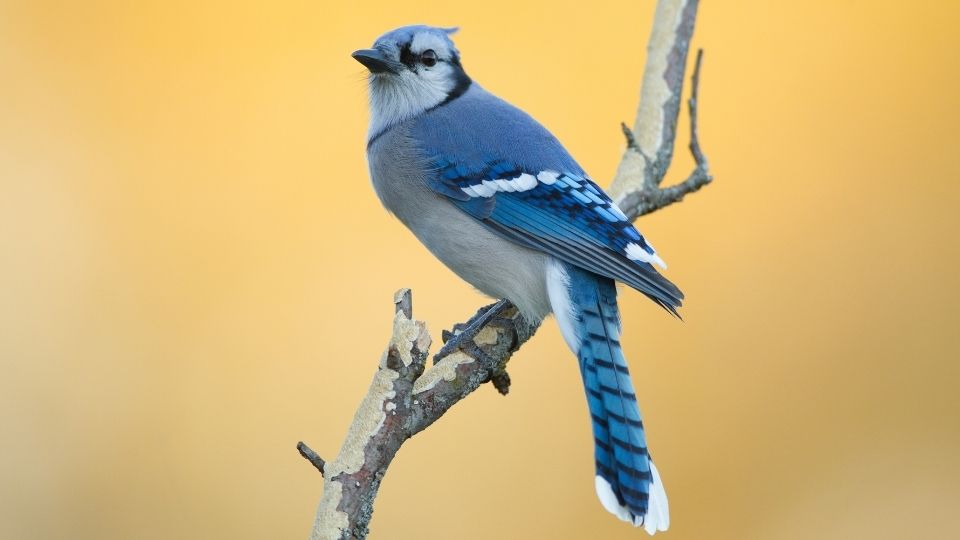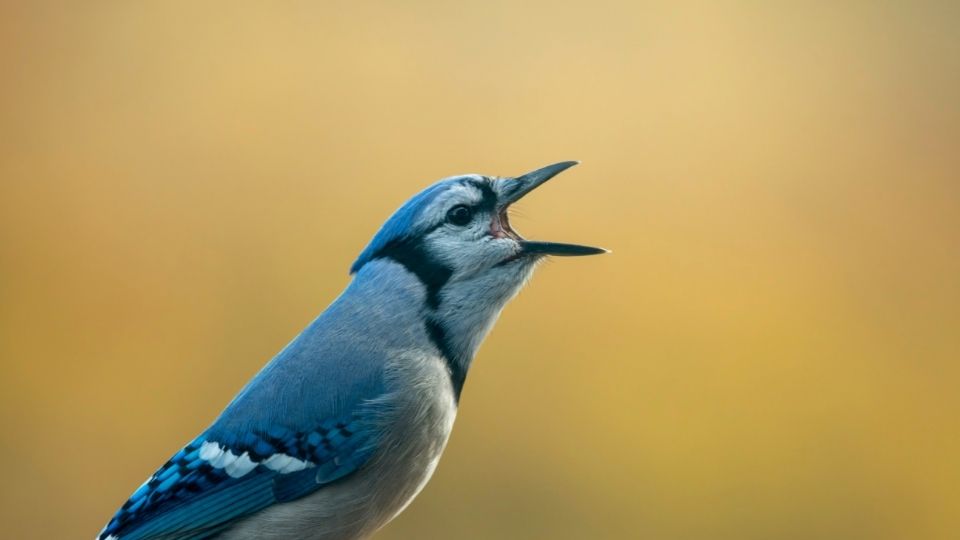Blue Jay's are most known for their high-pitched jeers, which are used when danger is present and needs to be deterred. They are also known to have a few other quieter songs in their repertoire such as the whisper song, that consists of several clicks and whirrs.
Let’s explore the different calls of the Blue Jay (Cyanocitta Cristata) and why that early morning screaming isn’t such a bad thing!
What Are the Different Calls of a Blue Jay?
The North American Blue Jay call is anything from a piercing scream to a soft series of clicks and whirrs. Five different blue jay calls include “Jeer Calls,” “Contact Calls,” “Pump handle Calls,” “Hawk calls,” and “Rattle Calls.”
Unlike other bird sounds, the Blue Jays don’t necessarily have a dedicated mating song like other bird species.
Instead, they have very distinct calls they use to communicate with each other. These calls include loud jeers to locate other birds or alarm local birds of a predator or whispers that are only audible if you’re carefully listening.

Blue Jays Sound: Jeer calls
A jeer call, also known as an alarm call, does one of two very different things. It’s the song that the Blue Jay is most known for because it’s the loudest of all of their calls.
When you hear a Blue Jay jeer, it is trying to alert nearby birds of a predator. However, it’s also used as a way to locate a mate. If you see a Blue Jay sitting on a branch jeering with no nearby predators, it’s likely trying to find a mate.
When a nearby Blue Jay hears the jeer, she will jeer back. This helps the male track down a nearby female during mating season. Think of the Blue Jay jeer as the alarm system on your car. It’s designed to ward off intruders, but you only use it to track your vehicle down in a packed parking lot!
Intrapair Contact Calls
Intrapair contact calls are only audible if you listen very closely. They comprise a series of clicks, whines, and whirrs. It’s also referred to as their Whisper song. Blue Jay’s sing a whisper song when they are courting and do it for no reason.
Often, birdwatchers spot Blue Jays bouncing around the branches of a tree or thick brush, emitting a series of very low clicks and whirrs ever so softly. These Blue Jay sounds are often heard as they build their nest together and hunt for building materials.
The Whisper Song typically lasts up to 2 minutes. While it’s heard during courtship, birdwatchers have also listened to this mellow tune when a Blue Jay is alone. Think of the Whisper Song as a Blue Jay’s way of humming itself!
In the video below, we rounded up 10 of the most fascinating facts about Blue Jays!
Pump Handle Calls
Pump handle calls, or “squeaky gate calls,” are another popular sound heard by Blue Jays primarily in the spring. It has squeaky notes that sound like metal scraping across metal like an old iron gate.
Blue Jays often recite pump handle calls to attract a mate and are only really heard early in the springtime. It’s rare to hear a pump handle call late in the summertime. Once summertime rolls around and breeding season is in full swing, Blue Jays hardly make any noise.
Hawk Calls
There’s no argument that Blue Jays are super-intelligent birds. Sometimes, when you think you hear the sound of a red-shouldered hawk, it’s the call of a Blue Jay.
If a Blue Jay spots a silently moving red-shouldered hawk in the area, it mimicks the hawk’s call to alert nearby birds that a predator is slinking about.
Rattle Calls
The Rattle Call, or the Growl Call, is the rarest of Blue Jay’s songs. A female Blue Jay most often sings this call, which is rare. The call sounds similar to a rattle punctuated by short clicks at the begging and end of the call.
It’s commonly heard when a female Blue Jay notices another bird encroaching on its territory around its nest. While it’s a very low-pitched song, it’s rather loud!

Why Are Blue Jays Silent in the Summer?
Have you ever noticed that Blue Jays are quite vocal in the early spring and fall? Then, sometime in the summer, they get eerily silent. The reason for their silence in the summertime is that they are very secretive about where they build their nests.
By staying quiet, they ensure that they don’t alert local predators of the location of these nests. Blue Jays lay their eggs between July and August, and young birds stay in the nest for up to 21 days after hatching.
After mating and breeding season is over, they get quite loud in the fall as they squabble with other backyard songbirds over spots at backyard birdfeeders or over acorns.
This summertime silence is true of all of the cousins in the Blue Jay family outside of North America, which include Florida Scrub Jay’s and Steller’s Jays.
What does it mean when a blue jay visits you?
If a screaming Blue Jay has even awakened you, it simply means that your local blue-feathered visitor noticed something nefarious happening and wanted to alert nearby neighbors.
Anecdotally, spotting a Blue Jay means that you are a trustworthy and loyal. These unique and smart songbirds are tough, fierce, and defend what is theirs.
The call of the Blue Jay bird isn’t exactly pretty, but it doesn’t matter. What matters is that they are loud and piercing enough to alert nearby birds of danger. We can learn a lot about life through the ways Blue Jays communicate. Be loud and piercing when you need to, and whisper a quiet song when you don’t!

